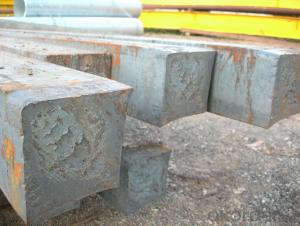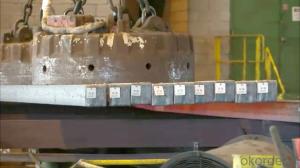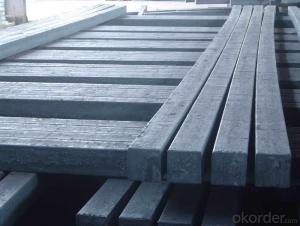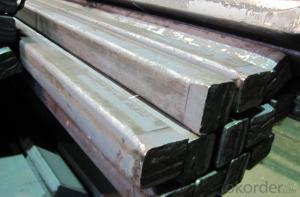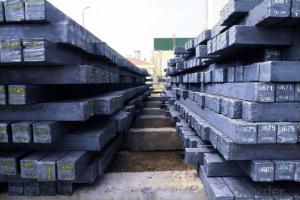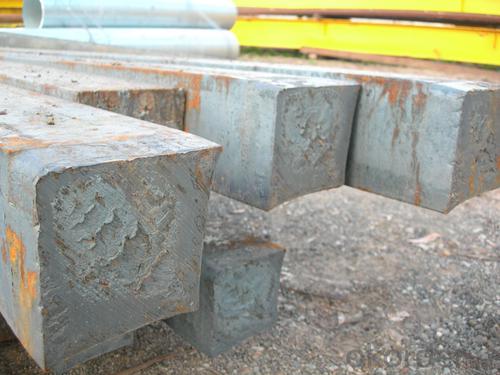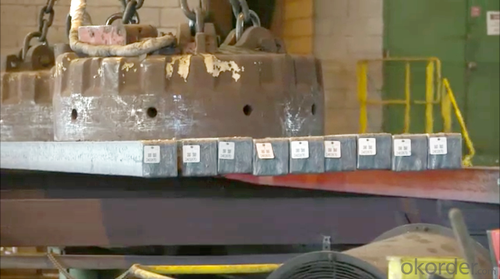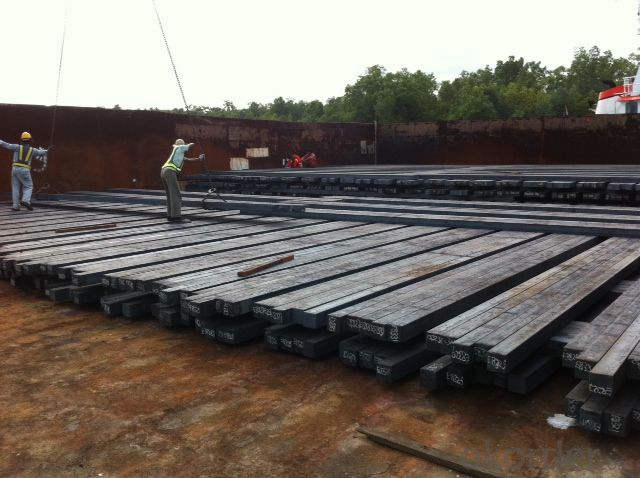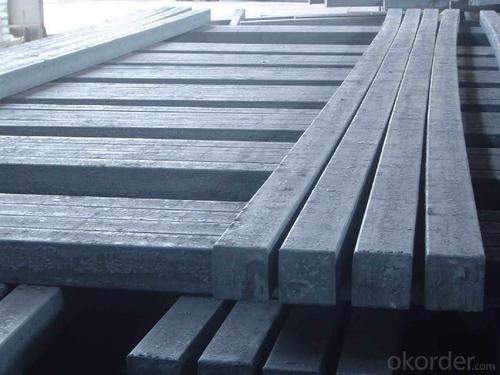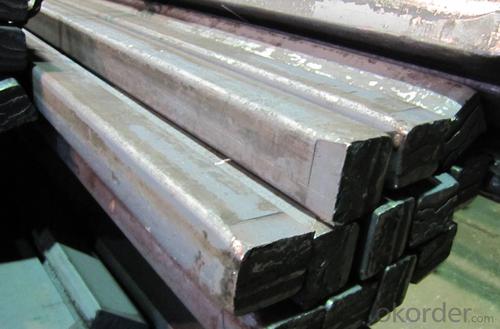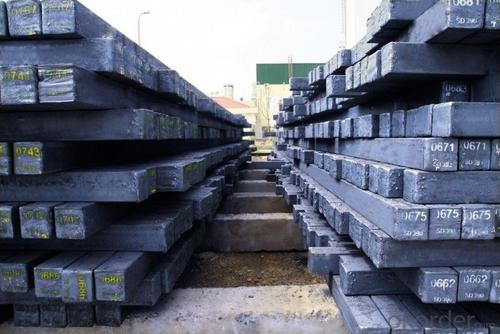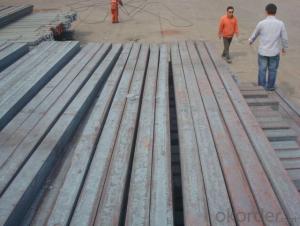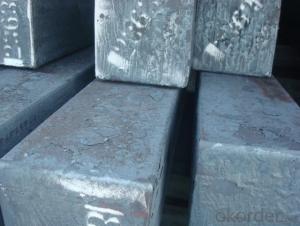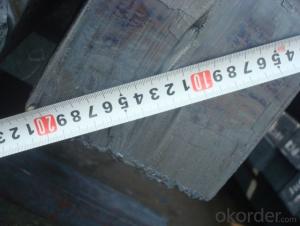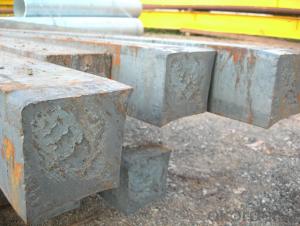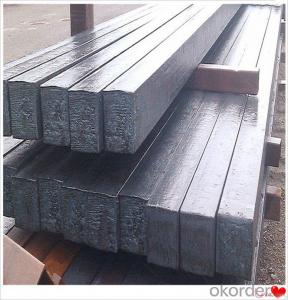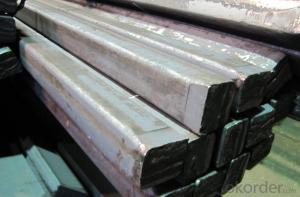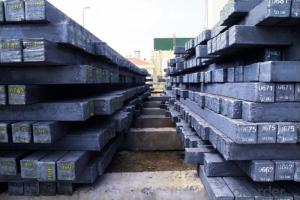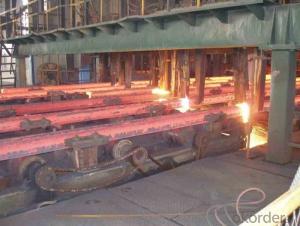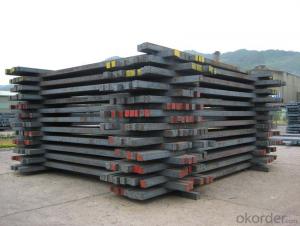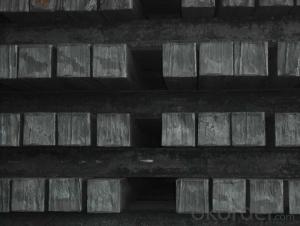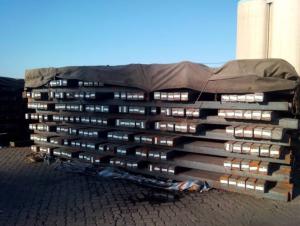Hot Rolled Steel Billet 3SP Standard 160mm
- Loading Port:
- Shanghai
- Payment Terms:
- TT OR LC
- Min Order Qty:
- 100 m.t.
- Supply Capability:
- 10000 m.t./month
OKorder Service Pledge
OKorder Financial Service
You Might Also Like
Structure of Hot Rolled Steel Billet 3SP Standard 160mm
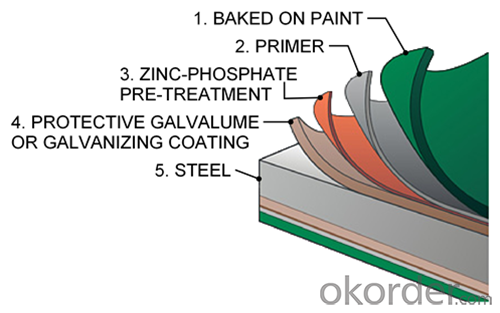
Description of Hot Rolled Steel Billet 3SP Standard 160mm
Prepainted Rolled steel Coil is a kind of coated steel coil/sheet. With the cold rolled steel of different strength and thickness as substrate, it is produced through applying Al-Zn coat on both faces by hot dip process. In its coating, Al accounts for about 55%, Si 1.6%, while the remaining is Zn. Aluminum zinc coils enjoys both the physical protective feature and durability of Al and the electrochemical protective property of Zn. And its surface has bright silver color and regular embossed-like figure, which are highly decorative. RAL Scale Z35 Prepainted Rolled Steel Coil for Construction Roofing
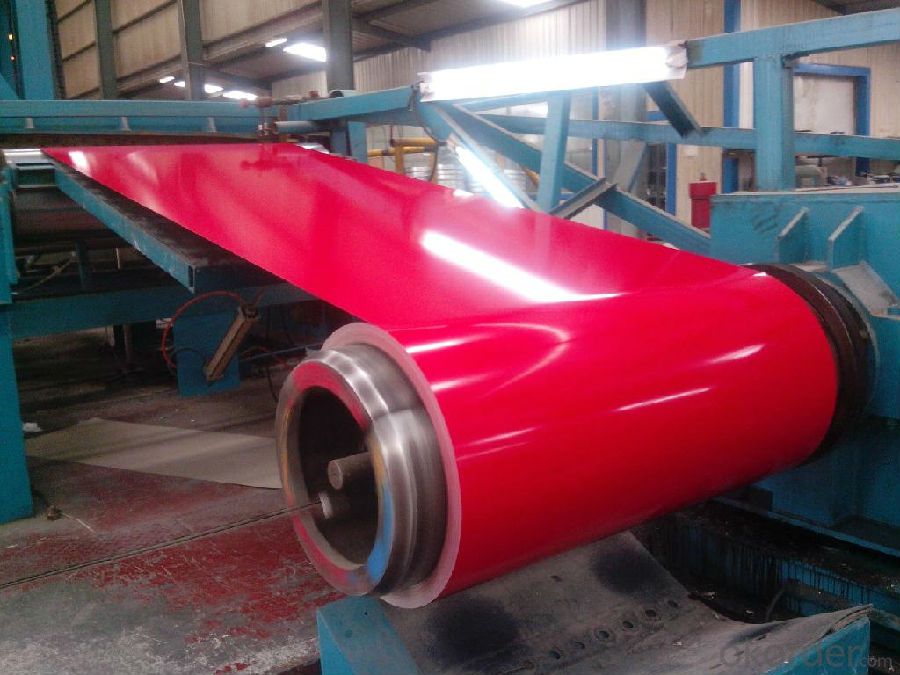
Main Feature of Hot Rolled Steel Billet 3SP Standard 160mm
1.Corrosion resistance: It mainly depends on the zinc protection. When the zinc being worn,
2. Heat resistance: steel sheet has excellent heat resistance, can withstand high temperatures over 300 centigrade, and is similar with aluminized steel high temperature oxidation resistance. It often used in chimney pipes, ovens, fluorescent lighting device and the device cover.
3. Heat reflective: Galvanized steel plate heat-reflective high rate is twice as galvanized steel, often used to make insulation materials. RAL Scale Z35 Prepainted Rolled Steel Coil for Construction Roofing
Applications of Hot Rolled Steel Billet 3SP Standard 160mm
1. Construction and building: roofing; ventilating duct; handrail; partition panel;etc.
2. Electric appliance: refrigerator; washing machine; refrigerator; DVD;etc.
3.Transportation: oil tank; gas tank;road sign; etc.
4.Agriculture constructions :barn; etc.RAL Scale Z35 Prepainted Rolled Steel Coil for Construction Roofing
5.Others:vending machine; game machine; auto parts spare parts etc.

Specifications of Hot Rolled Steel Billet 3SP Standard 160mm
Product | Hot Rolled Steel Billet 3SP Standard 160mm |
Material Grade | SGCC / SGCH / DX51D+AZ, etc |
Thickness | 0.5-3.0mm |
Width | 700-1500mm |
Tolerance | Thickness: +/-0.02mm , Width:+/-2mm |
Zinc-coating | AZ30-150g/m2 |
Technique | Raw material: Hot rolled steel coil --> Cold rolled_>hot dipped galvalume |
Surface | Dried, Chromated, Unoiled,RAL Scale Z35 Prepainted Rolled Steel Coil for Construction Roofing |
Spangle | Regular spangle , small spangle, zero spangle |
ID | 508MM 610MM |
Coil weight | 25MT max |
Export package | Cardboard inner sleeves, Waterproof paper, galvanized steel covered and steel strip packed |
FAQ of Hot Rolled Steel Billet 3SP Standard 160mm
We have organized several common questions for our clients,may help you sincerely:
1. What is the minimum order quantity ?
Our MOQ is 100 mt for each size each specification. Usually we can offer discount if can buy large QTY once. RAL Scale Z35 Prepainted Rolled Steel Coil for Construction Roofing
2. How long can we receive the product after ordering?
Our general delivery time is 30 days after confirmation, but so some special orders, we have offer special delivery time
3. How to guarantee the quality of the products?
We have established the international advanced quality management system ,every link from raw material to final product we have strict quality test;We resolutely put an end to unqualified products flowing into the market. At the same time, we will provide necessary follow-up service assurance.
4. What is the payment?
We accept T/T, L/C
- Q: How are steel billets used in the production of wind turbine towers?
- Steel billets are used in the production of wind turbine towers as they serve as the primary raw material. These billets are heated and then shaped into the required cylindrical or conical form, which is essential for the structural integrity of the tower. The billets are then welded together to form the tower sections, which are further assembled and erected to support the wind turbine components.
- Q: What are the main applications of steel billets in the aerospace industry?
- Steel billets are primarily used in the aerospace industry for the manufacturing of critical components such as engine parts, landing gears, structural components, and fasteners. These billets provide the necessary strength, durability, and resistance to extreme conditions that are essential in the aerospace sector.
- Q: What are the main challenges in the distribution of steel billets?
- The distribution of steel billets faces several challenges that can impact the overall efficiency and effectiveness of the process. Some of the main challenges include: 1. Logistics and transportation: Steel billets are heavy and bulky, requiring specialized equipment and handling. The transportation of these materials can be challenging, especially in remote areas or regions with poor infrastructure. The coordination of transportation modes, scheduling, and ensuring timely delivery can be a complex task. 2. Storage and inventory management: Steel billets often need to be stored for a certain period of time before they are processed or further distributed. Proper storage facilities with adequate capacity and appropriate conditions, such as temperature control and protection from moisture, are crucial. Managing inventory levels to avoid excess or shortage is also a key challenge. 3. Quality control: Ensuring the quality of steel billets throughout the distribution process is essential. Any damage or contamination during handling or transportation can affect the properties and performance of the final steel products. Implementing strict quality control measures, inspections, and monitoring processes is crucial to maintain the desired quality standards. 4. Market fluctuations and demand forecasting: The steel industry is highly influenced by market fluctuations and demand volatility. Accurate demand forecasting can be challenging due to various factors such as economic conditions, construction activities, and geopolitical events. Failure to predict demand accurately can result in excess inventory or stockouts, leading to financial losses. 5. Environmental regulations and sustainability: The steel industry is under increasing pressure to reduce its environmental impact and embrace sustainable practices. Compliance with environmental regulations, such as emissions control and waste management, can present challenges in distribution. Implementing eco-friendly transportation methods and exploring sustainable packaging options can help address these challenges. 6. Global competition and pricing: The distribution of steel billets is affected by global competition and pricing pressures. Steel producers and distributors must constantly analyze and adapt to market trends, competitor behavior, and price fluctuations. Maintaining competitive pricing while ensuring profitability can be a significant challenge in the steel billet distribution business. Overcoming these challenges requires coordination among various stakeholders in the supply chain, including steel manufacturers, distributors, logistics providers, and end-users. Continuous improvement, technological advancements, and effective communication are essential to mitigate these challenges and optimize the distribution of steel billets.
- Q: What are the different forging processes for steel billets?
- There are several different forging processes for steel billets, including open-die forging, closed-die forging, and seamless ring rolling. In open-die forging, the billet is heated and shaped between flat anvils or dies, allowing for greater flexibility in terms of shape and size. Closed-die forging involves placing the billet between two dies and applying pressure to shape it into the desired form. Seamless ring rolling, on the other hand, involves shaping the billet into a ring by applying pressure and rotating it between two rollers. These different processes offer varying levels of precision and control, allowing for the production of a wide range of steel products.
- Q: How are steel billets used in the production of transmission components?
- In the production of transmission components, steel billets are indispensable raw materials. These semi-finished products are typically obtained through the casting process and have a rectangular or square shape with a larger cross-sectional area compared to the final product. To shape the steel billets into the desired forms, a series of processes such as forging, rolling, or extrusion are employed. Each of these processes aims to transform the steel billets into specific shapes and sizes required for transmission components like gears, shafts, bearings, and housings. Forging is a widely used method for shaping steel billets. It involves heating the billet and using mechanical force to deform it into the desired shape, thereby enhancing the strength and durability of the transmission components. Rolling, on the other hand, gradually reduces the cross-sectional area of the steel billets by passing them through a series of rollers. This process helps achieve the desired shape and dimensions of the components. In certain cases, extrusion is employed to produce complex shapes. This process involves forcing the steel billets through a die to obtain the desired form, allowing for the production of intricate transmission components like splined shafts or valves. After shaping the steel billets into the required forms, further machining processes such as cutting, drilling, and grinding are carried out to achieve the final specifications. These components are then heat-treated and coated to enhance their strength, durability, and resistance to corrosion. In summary, steel billets play a crucial role in the production of transmission components as they provide a versatile and reliable raw material that can be shaped into various forms. They ensure that the transmission components possess the necessary strength, durability, and precision required for efficient and reliable operation in vehicles and machinery.
- Q: What are the different surface treatments applied to stainless steel billets?
- There are several different surface treatments that can be applied to stainless steel billets to enhance their appearance and improve their corrosion resistance. Some of the most common surface treatments include: 1. Pickling: This process involves immersing the stainless steel billets in a bath of acid, such as nitric or hydrofluoric acid, to remove any scale or oxide layers that may have formed during the manufacturing process. Pickling helps to restore the stainless steel's original finish and provides a clean, smooth surface. 2. Passivation: Passivation is a chemical process that is used to enhance the corrosion resistance of stainless steel. It involves immersing the billets in an oxidizing solution, typically a nitric acid bath, to remove any embedded iron or other contaminants from the surface. Passivation forms a thin oxide layer on the surface of the stainless steel, which helps to prevent corrosion and maintain the material's integrity. 3. Electropolishing: This is an electrochemical process that is used to remove a thin layer of material from the surface of the stainless steel billets. By passing an electric current through the billets while they are immersed in an electrolyte solution, the surface is smoothed and any surface defects or impurities are removed. Electropolishing not only improves the appearance of the stainless steel, but also enhances its corrosion resistance and makes it easier to clean. 4. Grinding and polishing: These mechanical processes involve using abrasive materials to remove any imperfections or surface irregularities from the stainless steel billets. Grinding is typically done using a coarse abrasive wheel, while polishing uses progressively finer abrasives to achieve a smooth, reflective surface. Grinding and polishing can be used to achieve a variety of finishes, ranging from a brushed or satin finish to a mirror-like polished finish. These different surface treatments can be used individually or in combination to achieve the desired appearance and performance characteristics for stainless steel billets in various applications.
- Q: Can steel billets be used for making architectural structures?
- Yes, steel billets can be used for making architectural structures. Steel billets are commonly used as a raw material in the construction industry for various applications including the fabrication of beams, columns, and other structural components. The high strength and durability of steel make it an ideal choice for architectural structures, providing stability and structural integrity to buildings.
- Q: What is the role of steel billets in the construction of railway stations?
- Steel billets are essential in constructing railway stations, serving as semi-finished steel products that are typically rectangular or square in shape. They function as raw materials for various construction purposes. Within the realm of railway stations, steel billets are primarily utilized to fabricate structural components like beams, columns, and trusses. These components provide the necessary strength and stability to support the weight of the station building, platforms, and any associated structures. A key advantage of employing steel billets in railway station construction lies in their high strength-to-weight ratio. Steel is widely recognized for its exceptional strength, making it an ideal material for supporting heavy loads. By incorporating steel billets, engineers can design and construct railway stations capable of enduring the constant traffic and heavy footfall characteristic of these public spaces. Furthermore, steel billets offer exceptional durability, corrosion resistance, and fire resistance, all of which are vital factors in ensuring the long-term safety and structural integrity of railway stations. These properties establish steel billets as a reliable and cost-effective choice for construction projects prioritizing safety and longevity. Moreover, steel billets can be easily shaped and fabricated into various sizes and dimensions, allowing for flexibility in design and construction. This versatility enables architects and engineers to create aesthetically appealing and functional railway station structures tailored to the specific project requirements. In summary, steel billets play a crucial role in railway station construction by providing the necessary strength, durability, and versatility required for the structural components supporting these vital transportation hubs. By utilizing steel billets, railway station construction projects can be completed efficiently, guaranteeing the safety and comfort of passengers for years to come.
- Q: Can steel billets be used for making tools?
- Yes, steel billets can be used for making tools. Steel billets are raw metal blocks that can be further processed and shaped into various tools through techniques like forging, machining, and heat treatment. The high strength and durability of steel make it an ideal material for tool manufacturing, as it provides the necessary hardness, toughness, and resistance to wear and tear.
- Q: What are the different surface treatments for improved corrosion resistance in steel billets?
- Steel billets can undergo different surface treatments to enhance their resistance to corrosion. These treatments aim to establish a protective barrier on the steel's surface, preventing corrosive agents from reaching the metal beneath. Some commonly used surface treatments for improved corrosion resistance in steel billets include: 1. Hot-dip galvanizing: Immersing the steel billets in molten zinc creates a galvanized coating, which is a zinc-iron alloy. This coating offers excellent corrosion resistance and prolongs the lifespan of the steel billets. 2. Electroplating: Through electroplating, a thin layer of metal such as zinc or nickel is applied to the steel billets using an electric current. This layer acts as a protective barrier against corrosion and provides an attractive finish. 3. Powder coating: By applying a dry powder mixture of resin and pigment to the steel billets and heating it, a durable and corrosion-resistant layer is formed. Powder coating is available in various colors and finishes. 4. Paint coatings: Applying corrosion-resistant paint to steel billets creates a protective barrier that hinders moisture and corrosive agents from reaching the steel. Multiple layers of paint can be added for enhanced durability and longevity. 5. Passivation: Passivation is a chemical process that eliminates free iron and contaminants from the steel billets' surface. This process prevents corrosion and encourages the formation of a protective oxide layer. Passivation is often combined with other surface treatments like electroplating or powder coating to enhance corrosion resistance. It is important to consider factors such as the billets' operating environment, desired lifespan, and cost considerations when choosing a surface treatment for improved corrosion resistance. A thorough evaluation of specific requirements and professional consultation are crucial in determining the most suitable treatment option.
Send your message to us
Hot Rolled Steel Billet 3SP Standard 160mm
- Loading Port:
- Shanghai
- Payment Terms:
- TT OR LC
- Min Order Qty:
- 100 m.t.
- Supply Capability:
- 10000 m.t./month
OKorder Service Pledge
OKorder Financial Service
Similar products
Hot products
Hot Searches
Related keywords
